
It was nearly twenty years ago when I had written this. After one of my first photojournalistic assignments:
What does one photograph to depict a flood? A submerged house, a boat on a highway, people wading in water?
As we boated through the branches in Jinjira we found a wicker basket in a tree. The family had long since abandoned their home, and their worldly belongings, gathered in that basket, waited patiently for their homecoming.

Wicker basket in tree. Jinjira. 2nd September 1988. Dhaka Bangladesh. ? Shahidul Alam/Drik/MajorityWorld
The worst flood in a hundred years? That statistic is hardly relevant. They, as those before them and after them will always face the floods. How does it matter whether they are 60% starved or 75% starved? How does it matter what country the relief wheat comes from? They themselves are mere statistics to power hungry politicians.

The family still needed to be fed. When I went back the next day to this place in Jinjira, the water had risen another three feet. I never saw her again. 2nd September 1988. Dhaka Bangladesh. ? Shahidul Alam/Drik/MajorityWorld
What is relevant are the feelings that have been kindled, that half kilogram of rice that has been shared, that solitary dry house that has warmly welcomed all who have needed the shelter. That others have shared the pain.
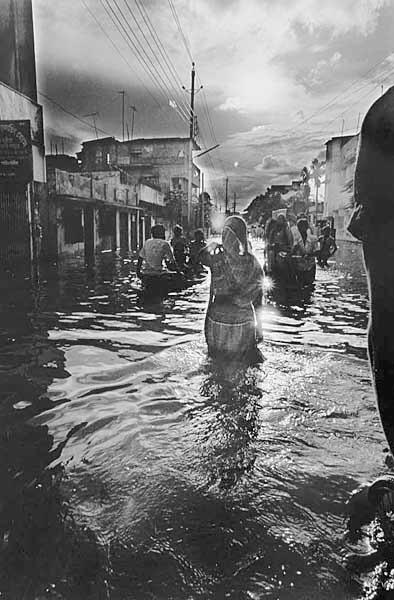
Wading down a street near Kamlapur railway station. “Dreamland Photographers”, the local studio, was still open for business. 2nd September 1988. Dhaka Bangladesh. ? Shahidul Alam/Drik/MajorityWorld
What is relevant is that now the roads are dry and the walls repainted and that a nation that once so cared has so quickly forgotten.
I look back and merely feel the ineffectuality of my images.
Shahidul Alam
Dhaka 1988
Nearly twenty years on, the floods are with us again. They are a part of our natural agricultural cycle. They irrigate the land, replenish the topsoil, remove the toxins. But deforestation in the mountains, illegal constructions, ill planned roads and ill caring leaders make floods take on a violent form. The waters get angry.
This year, when the waters had risen, our adviser advised that it was not yet a calamity. When the waters reached danger levels, the decree came that because of the state of emergency, ‘[political] banners were banned’ so while people struggled for food and shelter, banner rights became the issue. Now as the waters engulf the land and people flounder in need of relief, our adviser advises us ?we don?t have to help the people, they?re going to their relative?s house by themselves?.
Now that is a solution Bangladesh can offer to all the distressed people in the world. Just go find a relative.
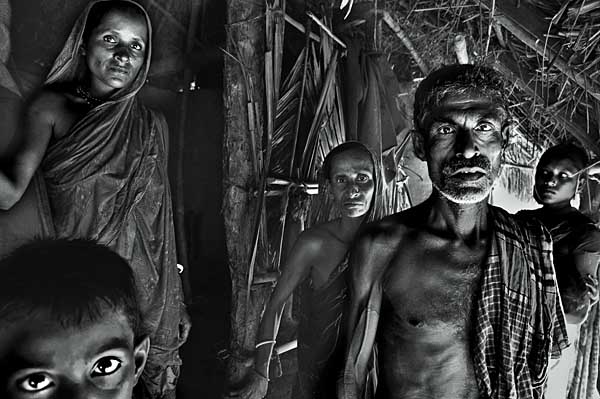
Before the floods. People affected by cyclone Akash. Mohishshoiri River. Khulna. 21 May 2007. ? Tanvir Ahmed/DrikNews
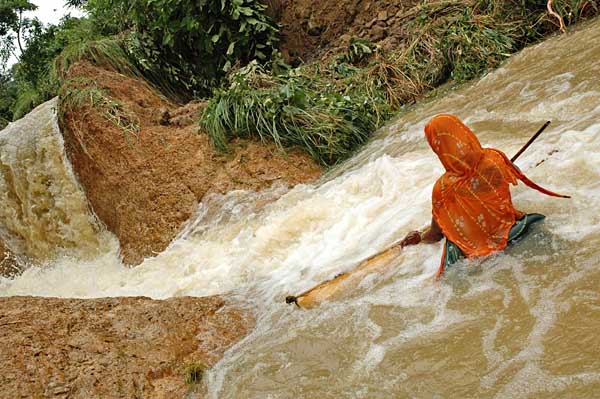
Woman fishes in the flood waters. 13 June 2007. Comilla Bangladesh. Kalim Shantu/DrikNews
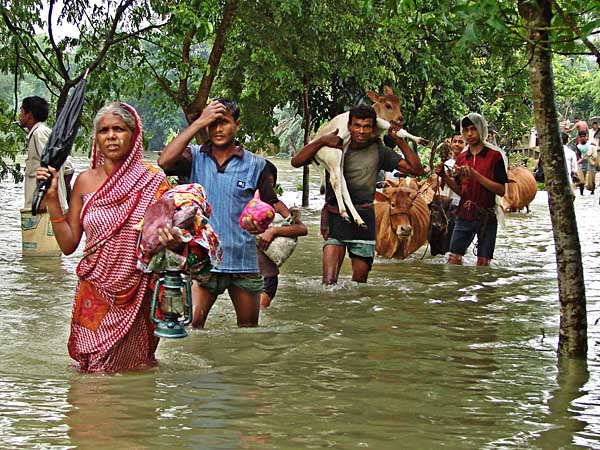
Twenty villages had been affected at the junction of the rivers Ghagot, Brahmaputra and Teesta making numerous people homeless. 31 July 2007. Gaibandha. Bangladesh ? Quddus Alam/DrikNews
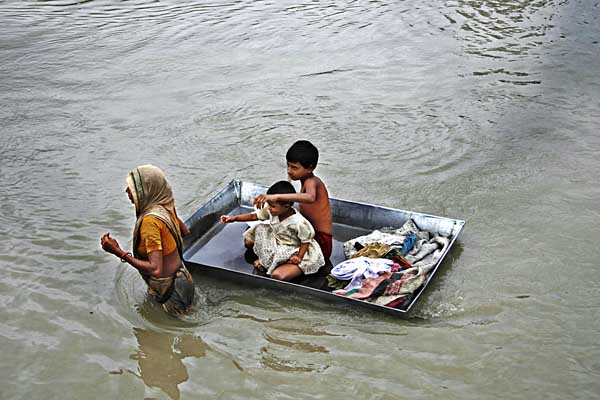
Woman in search of dry land. 30 July 2007. Sirajgonj Bangladesh ? Tanvir Ahmed/DrikNews
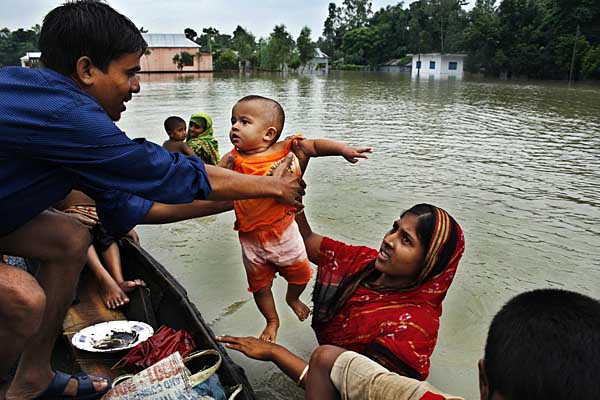
Villagers rescuing mother and child. 30 July 2007. Sirajgonj Bangladesh ? Tanvir Ahmed/DrikNews
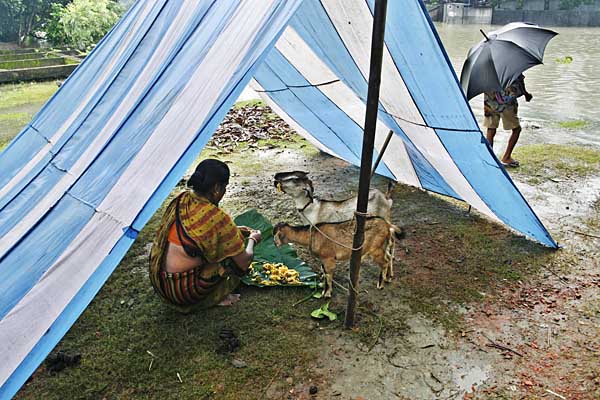
Woman feeding goats in makeshift tent. 30 July 2007. Sirajgonj Bangladesh ? Tanvir Ahmed/DrikNews
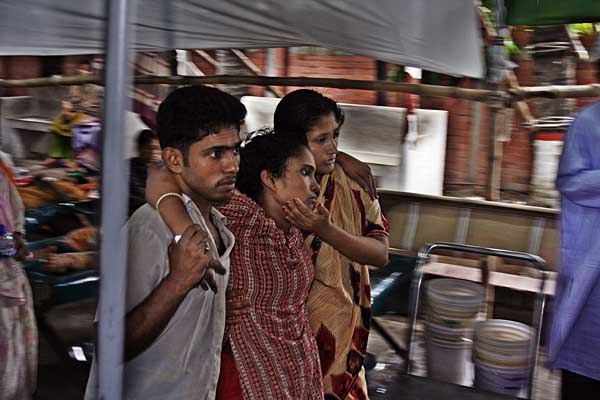
Diarrheal patients at hospital in Dhaka. 11 August 2007. Dhaka Bangladesh ? Munir uz Zaman/DrikNews
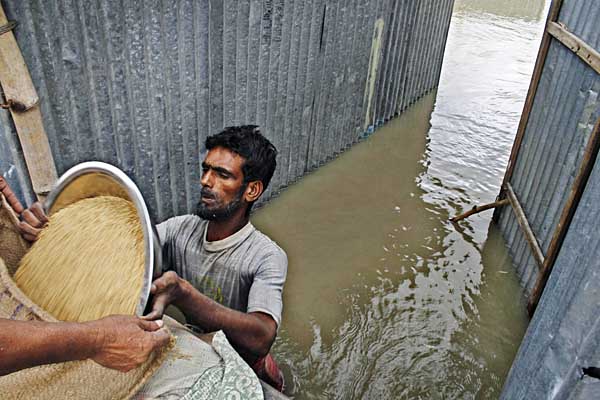
Spontaneous relief operations organised by citizen groups. 30 July 2007. Sirajgonj Bangladesh ? Tanvir Ahmed/DrikNews
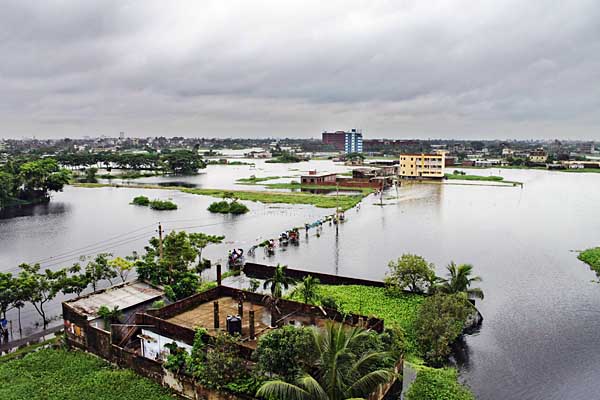
While one third of the country was flooded, people inside the DND (Dhaka Narayanganj Demra) embankment faced the stagnant water cause by rains. 25 July. Narayanganj Bangladesh ? Tanvir Ahmed/DrikNews
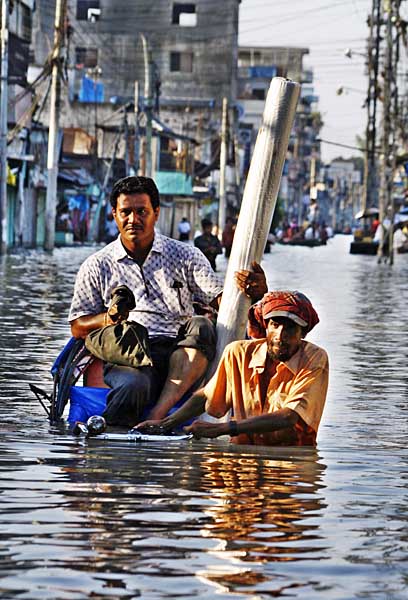
700,000 people were marooned in Sirajgonj. 64 people had already died when this photograph was taken. 5 August 2007. Sirajgonj Bangladesh ? Tanvir Ahmed/DrikNews
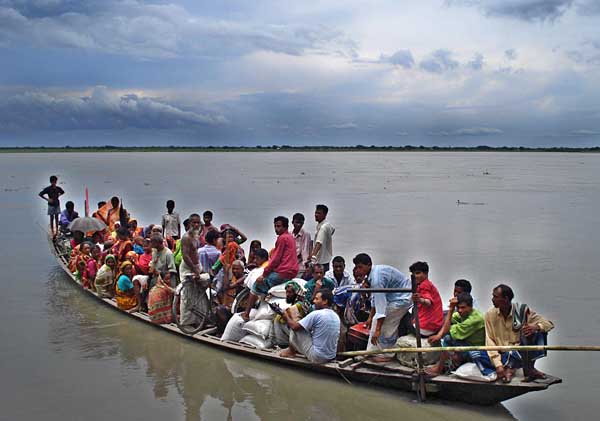
Boats are the only means of communication during floods. July 2 2007. Rangpur, Bangladesh. ? Ador Rahman/DrikNews
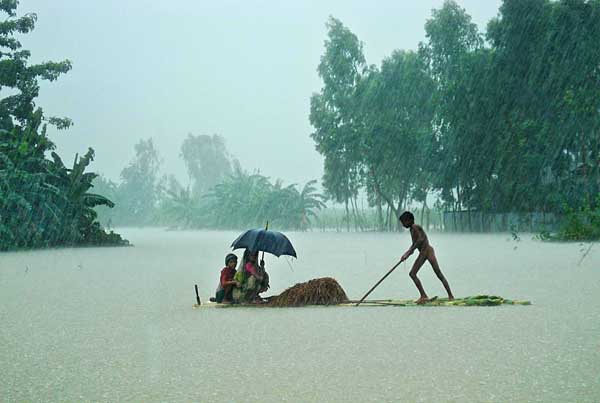
A family looks for shelter using a raft made of banana trees. 31 July 2007. Gaibandha Bangladesh ? Quddus Alam/DrikNews
And across the border, viewed from afar:
The Rains Reach Kolkata
When I was just a little boy, I watched the clouds advance
From rooftop high above the streets and bustle of Calcutta.
Up there, I watched the hawks soar high, and saw the palm fronds’ dance,
In wind that blew before the storm, and banged each window shutter.
It was in June, when summer’s heat had risen to its height,
That clouds approached, as though for war, advancing in a line,
Their heads held high, dark wall beneath — a fear-instilling sight,
With lightning streaks, and thunder-growls of warriors divine.
The sparrows, crows and pigeons fled, in haste to get away
And find refuge, as dust was blown from streets by gusts so strong
That palm trees bent, and tossed their heads, and back and forth did sway,
As leaves and clothes, and sailing fronds, with birds were swept along.
Then from the heat, we knew respite, as cool winds did descend
>From belly of the thunderhead, which bore a mist so fine,
With ions, whose electric charge did minds and bodies mend
And lift from summer somnolence like clear celestial wine.
And I would run and scramble down, from perch on highest roof,
To shelter in a doorway, where I still could watch the storm
Without myself being blown away, or struck by lightning hoof,
As racing clouds obscured the sky, like wraiths in equine form.
And then the dark, the greenish gloom, the flash more bright than sun,
The crack so loud it seemed the earth was cloven by the sky,
And pelting rain in slanting sheets, like bullets from a gun,
On roofs of tin, and wooden shades, and roll of thunder high!
And so the chariots of the gods would roll by overhead,
And we could hear the neighs and roars, and see the sparks that flew
As titans battled in the skies, by trumpet blowers led,
And sword of land pierced mail of sea, and blood of rain then drew.
And all the kids would venture out, unheeding of the scolds,
To jump with glee and leap and splash, in dance as old as time,
And yet as freshly bold that day, as in the eons old,
When sea would come to land to fight, and mate, in yearly rhyme.
Babui / Arjun Janah*
2007 August 11th, Sat.
Berkeley, California
*Arjun has an identity of his own, but for us photographers, he is the son of the legendary Indian photographer Sunil Janah.















